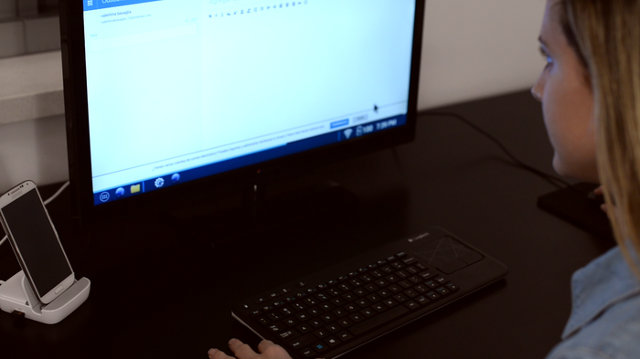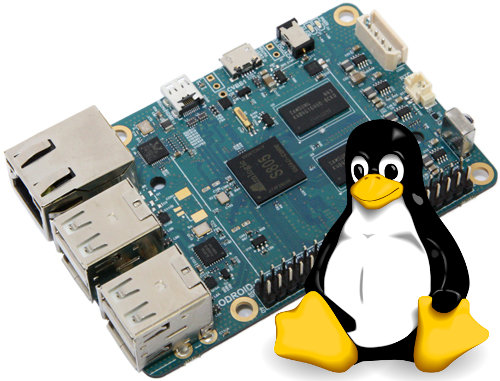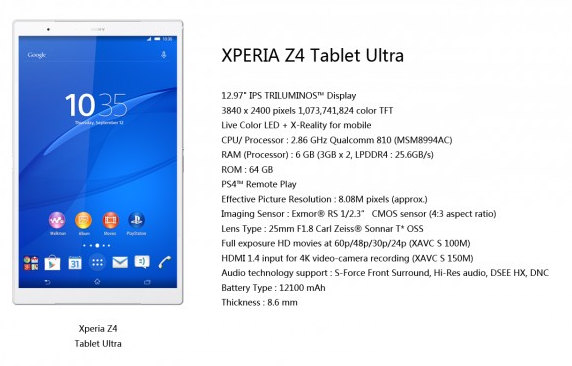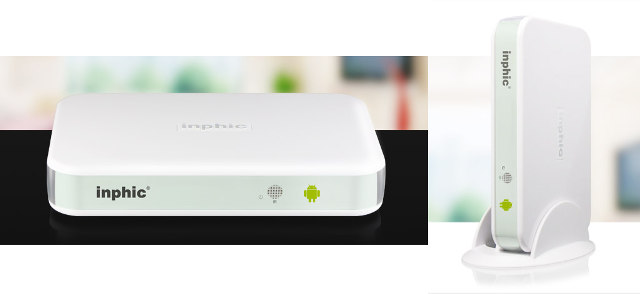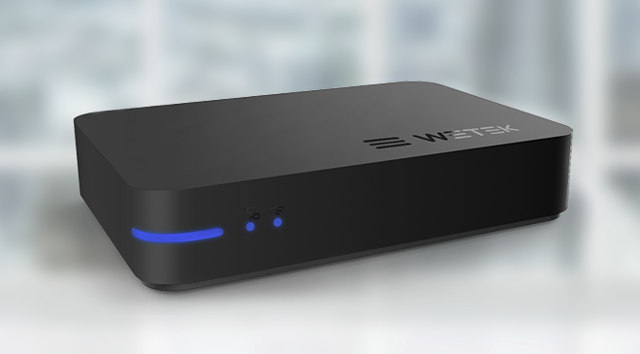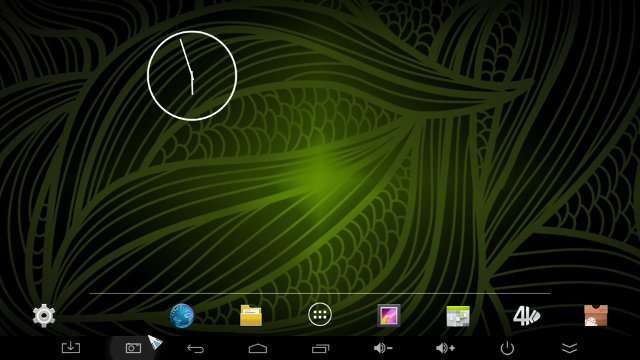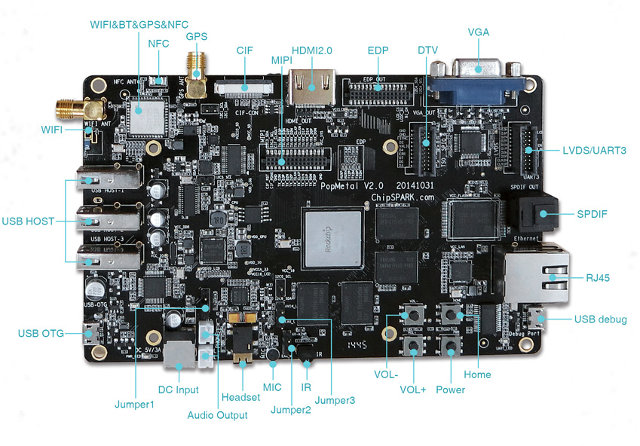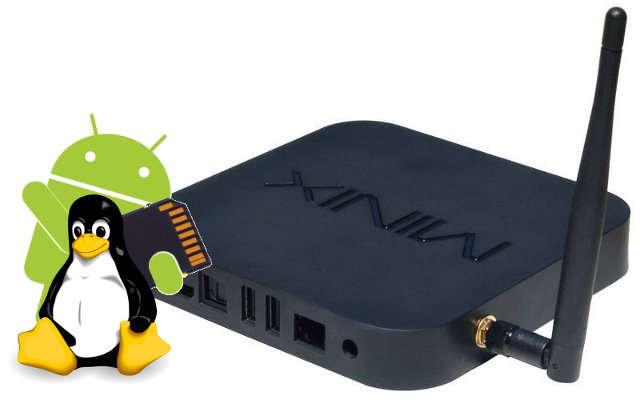Mobile desktop convergence has been a buzz word for several years now, and people have tried to use their smarphone as a desktop PC for a while thanks to technologies like MHL, which allows an easy connection between a phone and TV. However, mobile operating systems such as Android are not really suited for desktop use, and it can be a frustrating experience, so there needs to be different user interface in desktop and mobile modes for an optimal user experience. Canonical is working on this, and Ubuntu Edge, an ambitious, but ultimately failed crowdfunding campaign, was part of the strategy for convergence. But a team of developers lead by an ex-Google employee has been designed a solution with a desktop OS (Andromium OS) and a docking station that let you use your smartphone as a phone on the go, and as a desktop computer while docked, with Andromium user […]
U-Boot and Linux Source Code for ODROID-C1 Board Has Been Released
Hardkernel ODROID-C1 board, a more powerful $35 alternative to the Raspberry Pi, garnered a lot of attention when it was announced last week. At the time source code was not available, but as scheduled, U-boot and Linux source code is now available, and the full Android SDL should be released on February 2015. Instructions to get the code, and build both Linux and U-boot are available on ODROID-C1 Wiki, and I’ve just given a try to Linux instructions myself to see if I would encounter any issues in Ubuntu 14.04. Download Linaro GCC 4.7 toolchain from Linaro or Odroid website. Install the toolchain. They install it on /opt/toolchain, but instead I’ve installed in ~/opt/toochain, so I don’t need superuser permissions: mkdir -p ~/opt/toolchains tar xvf gcc-linaro-arm-linux-gnueabihf-4.7-2013.04-20130415_linux.tar.bz2 -C ~/opt/toolchains/ Add the following lines to ~/.bashrc export ARCH=arm export CROSS_COMPILE=arm-linux-gnueabihf- export PATH=~/opt/toolchains/gcc-linaro-arm-linux-gnueabihf-4.7-2013.04-20130415_linux/bin:$PATH To apply change, log out and log in, or run: […]
Sony Xperia Z4 Tablet Ultra Could Feature a 12.9″ Display, a 64-Bit ARM Processor, 6 GB RAM, and More
That’s only a leak, but if true, the upcoming Sony Xperia Tablet Ultra would be a real beast with a 12.9″ IPS TRILIMINOS touchscreen display with 3840 x 2400 resolution, a Qualcomm Snapdragon 810 64-bit Octa core processor @ 2.86 GHz coupled with 6GB LPDDR4 RAM, and 64GB internal storage. Sony’s tablet ould also come with an HDMI 1.4 input port allowing 4K recording up to 30 fps, which looks like an odd feature for a tablet. The battery capacity would be rather large as well as 12,100 mAh, yet thickness only 8.6 mm, which might be possible due to the massive screen. It would most probably run Android 5.0 Lollipop. Via Mike Cane and Padnews. Jean-Luc Aufranc (CNXSoft)Jean-Luc started CNX Software in 2010 as a part-time endeavor, before quitting his job as a software engineering manager, and starting to write daily news, and reviews full time later in 2011. […]
Inphic i8 Android Media Player Supports VP9 and H.265 Video Codecs, Features Allwinner H8 Processor
Allwinner H8 a new octa-core Cortex A7 processor for low cost Full HD media players with H.265 & VP9 codec support, and one the first product using the new Allwinner H-Series processor is Inphic i8, which sells for as low as 349 CNY (~$57) on JD.com and it’s also available on Taobao for 499 CNY (~$80). Some Inphic i8 boxes are available on Aliexpress, but so far all models are based on Allwinner A31s, promoted as quad core processor eight core GPU boxes, so don’t be fooled. Inphic i8 (Allwinner H8) specifications: SoC – Allwinner H8 octa-core Cortex-A7 processor @ 2.0GHz with PowerVR SGX544 GPU up to 720MHz System Memory – 1GB or 2GB DDR3 Storage – 8, 16, or 32GB internal storage Video Output – HDMI up to 1080p, Composite output (RCA) Audio Output – HDMI, and Left / Right RCA connectors Video Codecs Multi-format 1080p@60fps video playback, including […]
WeTek Play Android & Linux DVB-S2 / DVB-C/T/T2 Receivers are Now Available for 109 Euros
I reviewed Wetek Play Android media player with a DVB-S2 tuner this summer, and although I found it pretty good for a dual core media player, and liked its PVR functions, more work was needed to fix several bugs, and improve “WeTek Theater Live TV” app. Several months later, they must consider their devices ready, as they’ve now launched their online store selling the DVB-S2 and DVB-C/T/T2 versions for 109 Euros, and a version without DVB tuner for 99 Euros, all including free shipping worldwide. Let’s remind us of the specifications: SoC – Amlogic AML8726-MX dual core Cortex A9 @ 1.5GHz with a dual core Mali-400MP GPU System Memory – 1GB DDR3 Storage – 4 GB NAND flash + 1x micro SD slot Video Output – HDMI, AV (CVBS + R/L audio) Audio Output – HDMI, AV, and optical S/PDIF Tuners – DVB-S2, or DVB-C/DVB-T/DVB-T2 depending on model with two […]
MINIX NEO X8-H Plus Review
I posted pictures of MINIX NEO X8-H Plus media player a few days ago, and in this post I will report my impressions and testing results for the box, the first Amlogic S812 device I’ve fully reviewed so far, which adds H.265 video decoding up to 2160p, Gigabit Ethernet, and 802.11ac Wi-Fi to the original MINIX NEO X8-H. You can check my previous post for the full specifications of MINIX NEO X8-H Plus. First Boot, Settings and First Impressions The package includes both MINIX IR remote, and MINIX NEO M1 RF air mouse. I did not use the infrared remote at all, and instead I mostly used the provided air mouse, together with Mele F10 Deluxe air mouse when I needed to input text, or for comparison. NEO M1 comes with a built-in battery, and Off/On button, and can be used as a standard remote control, or as a wireless […]
PopMetal Rockchip RK3288 Development Board Features Multiple Display Interfaces (HDMI, VGA ,eDP, LVDS, MIPI), GPS and NFC Connectivity
Up to now, we’ve had mainly two development boards based on Rockchip RK3288 Cortex A17 processor: Firefly-RK3288 is a low cost development board powered by Rockchip RK3288 processor selling for as low as $140 shipped, and Radxa Rock 2, a more professional and expansive solution with dual Ethernet, 3G modem and so on. A third RK3288 board has now surfaced which offers a middle ground between Firefly and Radxa boards. PopMetal development board comes with 2GB RAM, 8GB eMMC, 5 video outputs / display interfaces namely HDMI, VGA, embedded DisplayPort (eDP), LVDS, and MIPI DSI, as well as the usual Gigabit Ethernet, Wi-Fi, and Bluetooth connectivity, complemented with GPS and NFC. PopMetal technical specifications: SoC – Rockchip RK3288 quad core ARM Cortex-A17 processor @ 1.8Ghz with ARM Mali-T764 GPU with support for OpenGL ES1.1/2.0/3.0, OpenVG 1.1, OpenCL 1.1, DirectX 11 System memory – 2GB DDR3 Storage – 8 GB eMMC, […]
Boot Ubuntu (Linux) or Android from an SD Card on Rockchip RK3288 Devices
There’s already a method to boot Android from an SD Card on RK3188 devices, which should work with all Rockchip RK3188 devices. Ian Morrison (Linuxium) has now provided a instructions to boot Linux or Android from a (micro) SD Card in Rockchip RK3288 based devices, leveraging work from linux-rockchip community, and especially naobsd. The Android flashing method is slightly different between RK3188 and RK3288, because most Rockchip RK3288 devices make use of eMMC flash, while older Rockchip RK3188 products feature NAND flash, and it appears Rockchip RK3xxx boot priorities (in the BootROM stored in the SoC itself) are as follows: eMMC, SD card, and NAND flash. All that means is that an updated version of the bootloader is needed which looks for a bootable SD card, and although very unlikely, your device could end up being bricked during this procedure. This is not a problem for Open Hour Chameleon since […]

